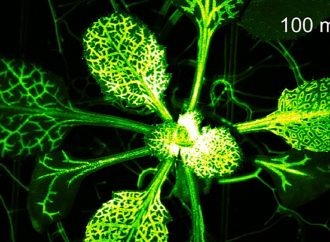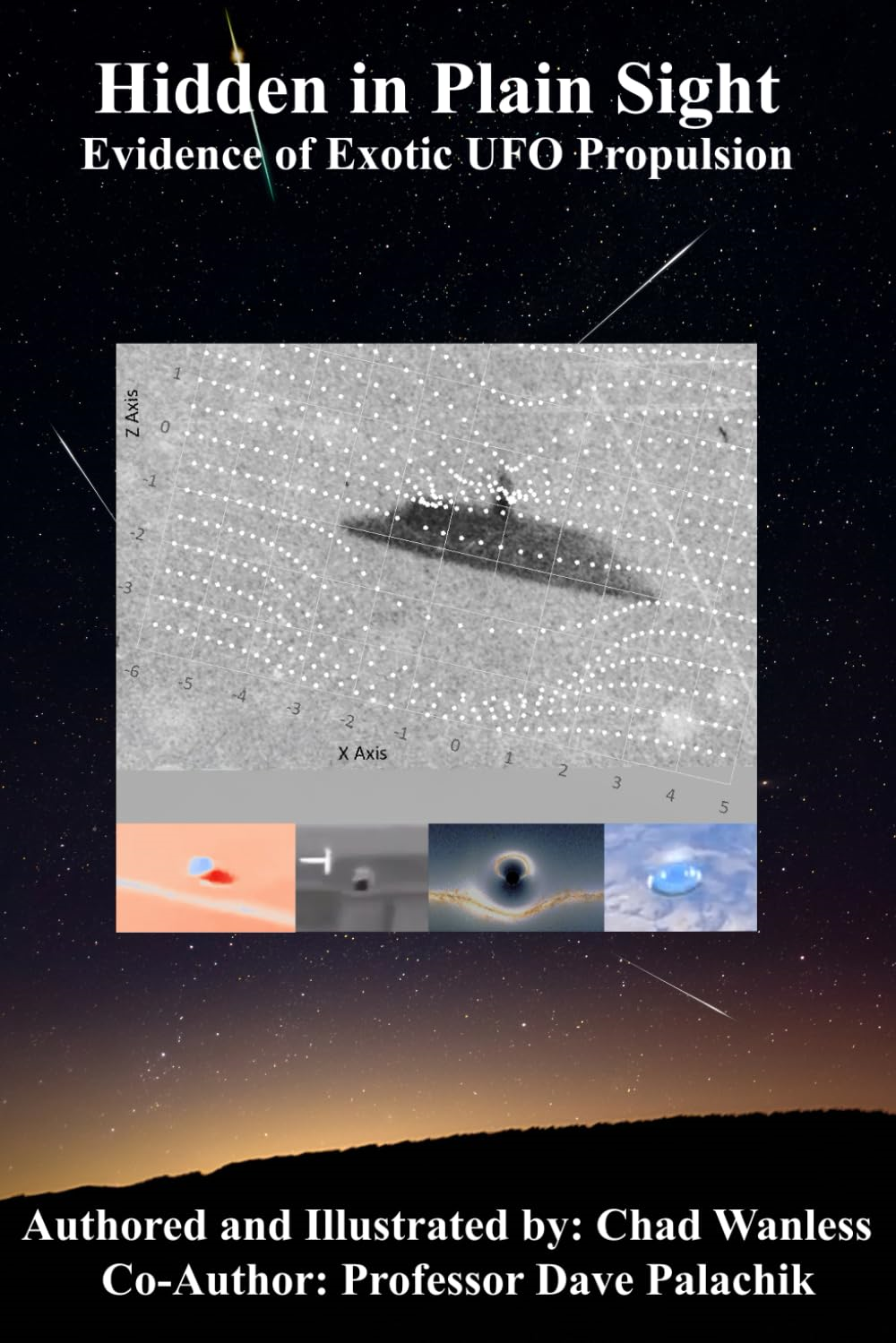Missions to Mars and beyond will take months or longer, so some creative strategies will be necessary to make sure that astronauts stay hale and hearty!
Source: Interesting Engineering
In the next few decades, a number of truly ambitious space exploration missions are planned. By the 2030s, NASA and the ESA plan to explore some of Jupiter’s largest moons for possible signs of life with their Europa Clipper and JUpiter ICy moon Explorer (JUICE) missions.
A similar mission, NASA’s Dragonfly quadcopter, is scheduled to be sent to Saturn’s largest moon, Titan. This vertical-takeoff and landing (VTOL) concept will explore Titan’s atmosphere and methane lakes, also for possible indications of life.
There are also several proposed missions that will involve sending astronauts to space for extended periods of time. Between 2024 and 2028, NASA intends to send astronauts back to the Moon for the first time since the Apollo Era (as part of Project Artemis).
During the 2030s, China, Russia, and the European Space Agency (ESA) hope to send their first crewed missions to the Moon. India is likely to be not far behind since they hope to send their first astronauts to orbit by 2022. And before the 2030s are out, NASA also hopes to send the first astronauts to Mars.
This will be the first time that astronauts travel to a celestial body in deep-space – i.e. beyond the Earth-Moon system. While robotic missions have been sent to every major body in Solar System – from Mercury to Pluto – sending astronauts to deep-space is a whole different ball game!
Not only are the mission profiles and architecture entirely different, but it also presents numerous hazards that demand creative solutions.
How long does it take to get to Mars?
Getting to just the closest bodies in deep-space is extremely time-consuming. Despite being the second-closest object to Earth (Venus is the closest), Mars is still staggeringly far away. Every two years, Mars and Earth will be at the closest points in their orbit to each other, which is called “opposition”.
During these times, Mars can get as close as 57.6 million km (35.8 million mi) from Earth. At other times, which is called “conjunction”, Mars can be as far as 400 million km (248.5 million mi) from Earth. For this reason, space agencies only launch missions towards Mars when it is at opposition.
To date, the fastest robotic mission ever sent to Mars was the New Horizons mission, which swung by the Red Planet just 39 days after it launched. However, the New Horizon’s mission was ultimately destination for Pluto, which meant it didn’t need to slow down or descend to the surface.
For missions that were bound for Mars, the total journey time was between 150-300 days, depending on the speed of the launch and the alignment of Earth and Mars. The fastest time for a mission to arrive around and land on the surface of Mars was 212 days, which was accomplished by the Mars Pathfinder.

Once again, though, crewed missions are another matter. In order to send a team of astronauts into space with everything they will need to accomplish their mission and make it home again, a spacecraft needs to be bigger, heavier, and have its own propellant and thrusters.
In this respect, the fastest mission on record comes to us from the Apollo Era. Of the six lunar missions that made it to the Moon and back (Apollo 13 made it back but never landed on the Moon), Apollo 10 set the record for the fastest human spaceflight – 39,897 km/h (24,791 mph).
However, this speed record was achieved during the return trip to Earth, not the initial launch. And even if a spacecraft could travel at this same speed for the entire duration, a mission to Mars would still spend four months in transit (never mind surface operations).
However, more realistic estimates indicate that a spacecraft would take a solid nine months (270 days) just to get to Mars, which works out to about two years if you factor in surface operations. This means that astronauts will be exposed to increased radiation and microgravity for up to 24 months.
What dangers are involved?
Spending long periods of time in space presents many challenges for life as we know it. These arise from the radiation environment that exists in space and the effects of microgravity on the physiology of living things.
Ongoing research aboard the International Space Station (ISS) has shown that on average, crews are exposed to 12 to 28.8 millirads per day. On Earth, in developed nations, people are exposed to an average of about 620 millirem (0.62 rads) annually – which works out to 1.7 millirads a day.

That’s seven to seventeen times as much radiation as we are used to. Exposure to this much radiation carries with it an elevated risk of cancer, damage to cellular tissues, and even genetic damage. However, there are mitigation strategies that have been known to work.
In addition to radiation shielding, astronauts aboard the ISS regularly check their radiation levels with “dosimeters”. NASA and other space agencies also have established guidelines on how much radiation astronauts can be exposed to over the course of their lifetime.
Microgravity is another matter. Long-term exposure to that has been shown to cause muscle and bone density loss, as well as diminished eyesight, organ function, and also changes on the genetic level. To address this, astronauts aboard the ISS stick to a strict exercise regimen to minimize the effects.
This includes the Combined Operational Load-Bearing External Resistance Treadmill (COLBERT), the Cycle Ergometer with Vibration Isolation and Stabilization System (CEVIS), and the Advanced Resistive Exercise Device (ARED), which simulates weightlifting.
However, the longer a person stays in space, the more difficult it will be to endure the physical changes. In addition, readjusting to normal gravity is rather difficult (and painful) after long periods spent in space.
After spending close to a year aboard the ISS, astronaut Scott Kelly experienced numerous health problems upon returning to Earth. For months after he returned to Earth, he experienced significant joint and muscle pain, nausea, vertigo, fever, severe swelling, and other complications.
So while mitigation strategies do exist, they are only so effective. At the same time, some of these strategies are simply not practical where deep-space missions are concerned.
Hibernation in nature
In the animal kingdom, many species of mammals undergo hibernation during particularly cold stretches. This involves entering a state of deep sleep state and depressing the body’s metabolism, leading to a lowered body temperature, slower breathing, and a slower heart-rate.
Other species, such as certain types of birds, fish, reptiles, and amphibians, undergo a similar process. While not technically hibernation, these animals are known to enter periods of torpor or “brumation” which is very similar. Basically, periods of reduced temperature lead to slowed metabolism and inactivity.
The benefits of this process are obvious. In climates that experience extended cold periods, food is more scarce and more energy is needed to maintain body temperatures and activity. As a result, many creatures opt to enter a comatose-like state and simply “wait it out”.
The same idea could assist in space exploration, where astronauts will have to spend extended periods of time in transit. By entering a hibernating state, they too would be able to wait out the long journey, and they would need far less in the way of food and supplies.
Hibernation in space
There are added benefits to this approach beyond saving on supplies. For deep-space missions, astronauts will not only be exposed to microgravity for long periods of time, but they also won’t have the benefit of exercise equipment. Space capsules simply aren’t big enough to accommodate heavy machinery.
A possible way around this is to generate artificial gravity, something which NASA is currently investigating for the sake of deep-space missions and long-term stays in space. This would consist of equipping spaceships with a rotating torus, which would generate centrifugal force to simulate gravity.
However, this means building larger and heavier ships, which means that more propellant will be needed to get them to their destinations. As solutions go, this is not a very cost-effective idea. This is where the concept of human hibernation comes into play.
The advantage of having to bring less in the way of supplies also means that the mission spacecraft could be smaller and lighter. Crews that are asleep for the journey would also require far less room. No mess halls, no exercise rooms, no common area, and smaller living quarters.
Smaller and lighter spacecraft would require less propellant to launch them into space or set them on a course towards the Moon, Mars, or other destinations. All of this would lead to dramatically lower costs.
For particularly long missions, hibernation could also be a way of addressing the dangers that come with being couped up inside a capsule for months on end. Under such conditions, astronauts could suffer could succumb to extreme boredom and claustrophobia – aka. “cabin fever”.
This way, crews would arrive at their destination well-rested and healthy, rather than frail, sickly, or suffering from a mental breakdown. There is also a body of recent medical research that shows how hibernation can mitigate the danger posed by cosmic radiation.

In short, ionizing radiation releases free radicals in the body, which causes cell damage and death. Since suppressing metabolism and oxygen consumption reduces the spread of free radicals, it will also reduce the rate of cell damage. This protective effect is even more pronounced at lower temperatures.
Possible methods
There are several ways to put human beings into a deep sleep state, some of which are already well-explored. For instance, in medicine, physicians will induce coma in patients by administering a controlled dose of barbiturates. This would be an example of “chemically-induced” suspended animation.
There’s also “temperature-induced” hibernation, where cryogenic processes are used to preserve a person in a suspended state. In this case, the body’s temperature is slowly lowered to the point where metabolism, heart-rate, and respiration slow and the subject enters a suspended state.
In recent years, NASA announced that it was investigating hibernation technology in partnership with the Atlanta-based aerospace company SpaceWorks. Unlike conventional cryogenics, the SpaceWorks method involves a device known as the RhinoChill.
This device relies on invasive tubes to shoot cooling liquid up the nose and into the base of the brain, which induces a hibernation-like state. RhinoChill is part of the company’s design for a torpor-inducing Mars Transfer Habitat (MTH).
Compared to conventional spacecraft, the MTH would carry astronaut crews kept in hibernation for the duration of the flight. While they are asleep, robots could administer sustenance intravenously and electrically stimulate the astronauts’ muscles to keep them and their bones strong.
For their design, SpaceWorks issued a Phase I award by the NASA Innovative Advanced Concepts (NIAC) program in 2013. In 2015, the company presented a finalized version of the MTH at the 2015 International Astronautical Conference (IAC) in Jerusalem, Israel.
According to the specifications they presented, this habitat would weight about 181 metric tons (200 US tons), would require 300 kilowatt-Electric (kWe) of power, and would be capable of housing 100 inhabitants.
As they reported at the time, this represented a significant reduction in terms of the mass and power needs when compared to then-current architectures for exploring Mars. In 2016, SpaceWorks was granted a Phase II NIAC award for their work, which has allowed them to develop the concept further.
SpaceWorks CEO John Bradford shared these new developments with Interesting Engineering via email. As he said:
“The RhinoChill system was an emerging commercial medical product that we baselined to provide an effective cooling system. During our Phase-2 grant, we made this system the backup/alternative in favor of chilling down the ambient air in the habitat for the crew. This was [possible] once we updated the internal design to a multi-level habitat, using the ‘upper deck’ as the thermally-cooled area for torpor crew. We believe this is a simpler and safer approach to implement, compared to the trans-nasal cooling device, use of gel pads, and/or cold saline injection.
“The most significant changes to our plan have been establishing a new mission baseline with a maximum 2-week torpor period for the crew while undergoing repeated cycles. Between cycles, the crew members will be active for short periods of 2-3 days. We have a high degree of confidence with achieving this duration consistently/safely for the first deep-space missions. We expect to continue to extend these durations over time and ultimately achieve extended torpor states during the entire transit phase.”
SpaceWorks has conducted several additional analyses since 2015 and found that their updated concept will still allow for smaller and cheaper spacecraft than what conventional mission profiles call for. This includes long-duration missions to Mars, Ceres in the Main Asteroid Belt, and other deep-space destinations.

“Our analysis consistently indicates significant savings in terms of habitat mass, launch mass, and mission cost,” he said. “We generally obtain a 50% reduction in the mass of the crew habitat. In addition to the engineering benefits such as reduced mass and cost, we have also identified a number of medical advantages associated with having the body in a cooled state.”
In recent years, the European Space Agency (ESA) has also started exploring the possibility of hibernation and induced-torpor technologies for space exploration. This began when the Future Technology Advisory Panel (FTAP) identified them as being essential for long-term missions to space.
This resulted in the creation of a dedicated ‘Topical Team’ on hibernation, which began conducting initial assessments with the help of the ESA’s SciSpacE team – which is tasked with researching how astronauts’ bodies react to living in space.
Jennifer Ngo-Anh is the team leader of the SciSpacE team. In a recent ESA press release, she explained how these studies have benefitted from both the study of hibernation in nature and medical research:
“For a while now hibernation has been proposed as a game-changing tool for human space travel. If we were able to reduce an astronaut’s basic metabolic rate by 75% – similar to what we can observe in nature with large hibernating animals such as certain bears – we could end up with substantial mass and cost savings, making long-duration exploration missions more feasible.”
“And the basic idea of putting astronauts into long-duration hibernation is actually not so crazy: a broadly comparable method has been tested and applied as therapy in critical care trauma patients and those due to undergo major surgeries for more than two decades. Most major medical centers have protocols for inducing hypothermia in patients to reduce their metabolism to basically gain time, keeping patients in a better shape than they otherwise would be.”

The study also relied on teams from the Concurrent Design Facility (CDF) and researchers from the Ludwig Maximilian University of Munich and the University of Goethe.
Together, they began by using an existing mission study that involved sending six astronauts on a five-year return-mission to Mars. They then adjusted the architecture, logistics, radiation shielding, power consumption, and overall mission design to account for hibernation technology.
What they found was that the mass of the spacecraft could be reduced by a third thanks to the removal of crew quarters and a reduction in the amount of supplies needed. Hibernation would take place in small pods that would double as crew cabins while the crew was awake.
Robin Biesbroek of the CDF described the evaluation process and its results:
“We looked at how an astronaut team could be best put into hibernation, what to do in case of emergencies, how to handle human safety and even what impact hibernation would have on the psychology of the team. Finally, we created an initial sketch of the habitat architecture and created a roadmap to achieve a validated approach to hibernate humans to Mars within 20 years.”
The hibernation phase would end with a 21 day recuperation period before the crew arrived at their destination. Both SpaceWorks and the ESA have found that the administration of torpor-inducing drugs could also be effective.

According to John Bradford, this includes drugs like adenosine receptor agonists and antagonists, which have the benefit of lowering metabolism while minimizing sedation levels. These would be used primarily in recovery, as he explained.
“The primary reason for sedation is to suppress shivering (i.e. [the] body’s attempt to rewarm) and make the crew/patient comfortable during hypothermia induction,” he said. “These new pharmaceuticals can safely suppress shivering while also stabilizing bradycardia.”
Amid all the proposals, concepts, and feasibility studies on the subject, one thing is clear: missions to deep-space are within reach. When it comes time to send humans beyond Earth and the Moon, measures will need to be in place to ensure that astronauts can stay healthy for the journey.
At this juncture, hibernation appears to be well-placed among the other various options (such as artificial gravity or portable exercise equipment). And considering the importance of cost-effectiveness in space travel, it is likely to be a part of any deep-space missions in the near future.
Source: Interesting Engineering































Leave a Comment
You must be logged in to post a comment.